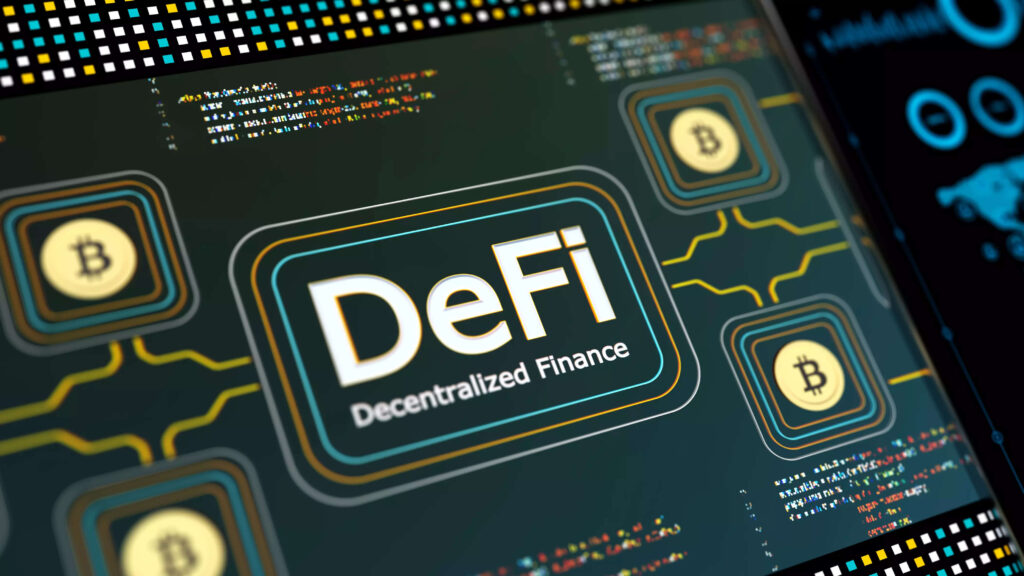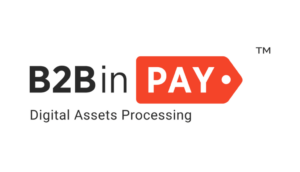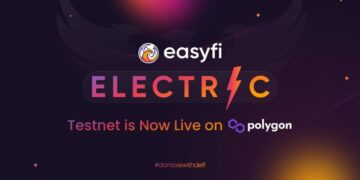- Refi focuses on utilizing blockchain technology to verify an organization’s green credentials and coordinate investments to ensure funding goes where it needs.
- John Fullerton, a renowned economist, introduces the concept of regenerative Finance in his 2015 paper called Regenerative Capitalism.
- The 2022 crypto crash highlighted major flaws within Standard DeFi systems.
With the fourth Industrial Revolution steadily transforming our view on technology, the Web3 Industry has contributed the most. Its different elements, digital currency, NFT, AI, and decentralized applications, have redefined several sectors.
Today blockchain developers have expanded the application of blockchain into agriculture, insurance, and identification systems and even redefined several governmental services. It became clear that Web3 had exceeded the expectations and potential of Web2.
Despite its wide array of implementations, its most noticeable achievement is reimagining the traditional finance system. Through this, Decentralized Finance(DeFi) introduced new markets, leading to new industries like Fintech. The applications of DeFi have set in motion the change the world desperately needs. However, like all technology, a breakthrough occurred, and a new financial system has outpaced DeFi, Regenerative Finance(ReFi).
Developers have claimed ReFi I the next iteration of DeFi, and organizations and governments have already begun diving into this new technology. This article will dive into the concept of ReFi and discuss if their unique approach to Finance is genuinely superior.
DeFi’s redefining nature
The Web3 industry has proven its diversity and superiority to traditional systems. Its decentralized, immutable, and scalable nature has awed innovators and developers for the past few years. Decentralized Finance is among the milestones web3 has brought to use. DeFi was the product of developers analyzing and reverse engineering standard crypto networks. Essentially, the mechanics of Bitcoin soon defied the limitation of traditional financial systems and ushered in a new age.
DeFi is an emerging technology based on secure distributed ledger systems defined from standard crypto networks. The main goal of DeFi was to usurp and replace Centralized Finance, which encompasses most regular banks and financial institutions. The concept of digital currency allured many innovators. Its fast, efficient, and safe transaction processes proved superior to existing bank transactions.
Also, Read Blockchain Breakthrough: African banks embrace the future of Finance.
Further, its lack of a centralized institute made it easier for developers to scale their financial services to unbanked communities worldwide. Defi eliminated the need for intermediary entities that have clogged the processing speed of most banks and financial companies. Furthermore, its decentralized nature makes it easy for users to transact money and receive several financial services regardless of their geological locations.

Decentralized Finance has led to the establishment of new industries, such as Fintech, while contributing to existing systems.[Photo/Medium]
Its sheer applicability gained fame among innovators and developers, leading to one of the fastest-growing industries today; the Fintech Industry.
At its core, DeFI utilized P2P transactions, mimicking the mechanism of most crypto transactions. Furthermore, DeFi is interoperable with multiple technologies. Recently most organizations within the DeFi sector have merged their technology with AI improving its efficiency and reducing its risk factor.
In addition, DeFi utilizes smart contracts that automate most operations, alleviating the need for intermediary entities. The distribution of financial services requires a user to meet a particular set of criteria. This simplistic yet complex mechanism was proper in the fourth industrial revolution. Experts have stated that DeFi will soon outpace traditional face systems by 2030.
Regenerative Finance, the next iteration of DeFi
The web3 industry has rapidly improved in the past decade. What started as a digital currency has developed into a decentralized enterprise-level application. Developers have claimed that we still need to explore the full [potential of the web3 industry.
Fortunately, a new version of DeFi has emerged, and many organizations have leaped into the concept. Regenerative Finance or ReFi leveraged on DeFi concepts and tools to establish regenerative economic systems. ReFi focuses on utilizing blockchain technology to verify an organization’s green credentials and coordinate investments to ensure funding goes where it needs.

John Fullerton, founder of the ReFi concept, ushered in a new and improved financial system.[Photo/Medium]
The 2022 crypto crash highlighted major flaws within Standard DeFi systems. Many experts suggested that Defi take a more centralized approach, ultimately undermining its core principles. These developers introduced the ReFi concept to create a more balanced relationship between the web3 industry and the global economic structure.
Also, Read Decentralized Finance: Redefining financial transactions in the digital economy.
This new technology takes the core aspect of Defi, which seeks to empower the user directly and ex-pats to encompass communities, small businesses, and other enterprises.
John Fullerton, a renowned economist, introduces the concept of regenerative Finance in his 2015 paper called Regenerative Capitalism. According to John, he derived the ReFi concept’s inspiration from observing how nature. He stated that the regenerative economy valued resource replenishments and the equitable distribution of benefits among all users. By embracing a self-sufficient economy that discusses son continuous renewal of resources, ReFi has combined blockchain technology with a renewable factor, adding to its long line of attributes.
Key straight of Regenerative finance systems
ReFi is an evolved version of Defi. It has built its principles from the Web3 industry na intervenes in its theories to develop a regenerative economy. Among its similarities, ReFi enables users to control their funds while enabling transparent and open transitions, services, and applications. It relied on digital tools and the internet to create positive physical and tangible outcomes for its user.
Regenraive Finace has four key traits;
Global accessibility
Since ReFi is derived from Defi, it shares the common goal of global domination. Currently, Defi has significantly chopped away the influence of transitional financial systems. ReFi intends to build upon this feat to develop better strategies. The regenerative principle allows users to gain better financial services with significantly reduced risk factors. Furthermore, its added advantage over DeFi sweetened the deal for most customers, promoting financial inclusion while overcoming the limitations DeFi applications have faced.
Automated Positive actions
Developers have claimed ReFi systems enable advanced coding of desired behavior directed into the core of economic systems. Its ability to automatically compensate for its emissions has awed most economic experts. Furthermore, ReFi systems can send a portion of the exchanged value to communities needing funding. Again, its unique approach to most financial stems aligns with environmental and humanitarian goals.
Flexibility
Despite its evolution from Defi, Regenerative Finance belongs within the Web3 Industry. This means it contains a core principle outpacing most traditional financial systems; flexibility. ReFi systems are highly adaptable and can quickly modify their services based on their interactions nethers. Its underlying blockchain technology and smart contracts can modify its services to maximize their impact on a target group. This automatically adjusts their services based on market conditions and highlights upcoming economic opportunities. In addition, its utilization of AI increases its adaptability as time progresses.
Also, Read Impact of DeFi: Underneath the success lies potential risks.
Frictionless approach
Traditional financial systems still hold an immense influence within the world. ReFi eliminates the friction points of traditional financial methods. Its use of the DeFi tool enables this technology to operate faster than most traditional financial systems. For instance, ReFi can quickly and cheaply transfer resources from eh Global North to the Global South. Bridging this gap enables ReFi to expand the financial inclusion rate in both regions.
Conclusion
ReFi is still an upcoming concept. Its unique approach to most issues within the economic system sets it above the most exciting financial systems. Its emphasis on a regenerative economy has outpaced the transformation rate of Dei. If the Web3 industry tarantula s to a more ReFi-based economy, it can prevent many crises plaguing the ecosystem.
- SEO Powered Content & PR Distribution. Get Amplified Today.
- PlatoData.Network Vertical Generative Ai. Empower Yourself. Access Here.
- PlatoAiStream. Web3 Intelligence. Knowledge Amplified. Access Here.
- PlatoESG. Automotive / EVs, Carbon, CleanTech, Energy, Environment, Solar, Waste Management. Access Here.
- BlockOffsets. Modernizing Environmental Offset Ownership. Access Here.
- Source: https://web3africa.news/2023/08/06/featured/regenerative-finance-the-next-financial-system/
- :has
- :is
- :where
- 2015
- 2022
- 2030
- a
- ability
- above
- According
- achievement
- added
- adding
- addition
- advanced
- ADvantage
- African
- again
- age
- agriculture
- AI
- Aligns
- All
- allows
- already
- among
- an
- analyzing
- and
- Application
- applications
- approach
- ARE
- Array
- article
- AS
- aspect
- attributes
- automate
- automatically
- away
- Bank
- BANK TRANSACTIONS
- Banks
- based
- became
- begun
- behavior
- belongs
- benefits
- Better
- between
- Bitcoin
- blockchain
- blockchain technology
- both
- breakthrough
- bridging
- brought
- build
- built
- businesses
- by
- called
- CAN
- capitalism
- centralized
- Centralized Finance
- change
- claimed
- clear
- Coding
- combined
- Common
- Communities
- Companies
- complex
- concept
- concepts
- conditions
- contains
- continuous
- contracts
- contributed
- contributing
- control
- coordinate
- Core
- Crash
- create
- Credentials
- crises
- criteria
- crypto
- crypto crash
- crypto transactions
- Currency
- Currently
- Customers
- deal
- decade
- decentralized
- Decentralized Applications
- Decentralized Finance
- DeFi
- defied
- defined
- dei
- Derived
- desired
- desperately
- develop
- developed
- developers
- different
- digital
- digital currency
- directly
- discuss
- distributed
- Distributed Ledger
- distribution
- Diversity
- easier
- easy
- Economic
- economic system
- Economist
- economy
- ecosystem
- efficiency
- efficient
- elements
- eliminated
- eliminates
- embrace
- embracing
- emerged
- emerging
- Emerging Technology
- Emissions
- emphasis
- empower
- enable
- enables
- enabling
- encompass
- encompasses
- Engineering
- ensure
- enterprise-level
- enterprises
- entities
- environmental
- equitable
- essentially
- establish
- establishment
- Even
- evolution
- evolved
- exceeded
- exchanged
- exciting
- existing
- Expand
- expanded
- expectations
- experts
- explore
- Face
- faced
- factor
- factors
- FAME
- FAST
- faster
- feat
- few
- finance
- financial
- financial inclusion
- Financial institutions
- financial services
- financial system
- financial systems
- fintech
- flaws
- Flexibility
- focuses
- For
- founder
- four
- Fourth
- friction
- from
- full
- Fullerton
- funding
- funds
- Furthermore
- future
- Gain
- gained
- gap
- Global
- Global Economic
- goal
- Goals
- Goes
- governmental
- Governments
- Green
- Group
- had
- Have
- he
- Highlighted
- highlights
- highly
- his
- hold
- How
- However
- HTTPS
- Humanitarian
- i
- Identification
- if
- immense
- immutable
- Impact
- improved
- improving
- in
- inclusion
- Increases
- industrial
- Industrial Revolution
- industries
- industry
- influence
- innovators
- Inspiration
- instance
- Institute
- institutions
- insurance
- intends
- interactions
- intermediary
- Internet
- interoperable
- into
- introduced
- Introduces
- Investments
- issues
- IT
- iteration
- ITS
- John
- jpg
- Key
- Lack
- leading
- Led
- Ledger
- leveraged
- lies
- like
- limitation
- limitations
- Line
- locations
- Long
- made
- Main
- major
- MAKES
- many
- Market
- market conditions
- Markets
- max-width
- Maximize
- means
- mechanics
- mechanism
- Meet
- methods
- Milestones
- modify
- money
- more
- most
- motion
- multiple
- Nature
- Need
- needing
- needs
- networks
- New
- next
- NFT
- North
- occurred
- of
- on
- ONE
- open
- operate
- Operations
- opportunities
- or
- oracle
- organizations
- Other
- our
- outcomes
- over
- overcoming
- p2p
- Paper
- particular
- past
- physical
- plato
- Plato Data Intelligence
- PlatoData
- points
- portion
- positive
- potential
- prevent
- principle
- principles
- processes
- processing
- Product
- promoting
- proper
- proved
- proven
- quickly
- rapidly
- Rate
- Read
- receive
- recently
- Redefining
- Reduced
- reducing
- ReFi
- Regardless
- regenerative
- Regenerative Finance
- regions
- regular
- relationship
- Renewable
- Renowned
- replace
- requires
- resource
- Resources
- reverse
- Revolution
- Risk
- Risk Factor
- risk factors
- s
- safe
- scalable
- Scale
- sector
- Sectors
- secure
- Seeks
- send
- Services
- set
- Sets
- several
- Shares
- significantly
- similarities
- small
- small businesses
- smart
- Smart Contracts
- son
- soon
- South
- speed
- standard
- started
- stated
- stems
- Still
- straight
- strategies
- structure
- success
- such
- superior
- system
- Systems
- Take
- takes
- Target
- Target Group
- Technologies
- Technology
- than
- that
- The
- The Future
- the world
- their
- These
- this
- Through
- time
- to
- today
- tool
- tools
- traditional
- traditional finance
- transact
- transaction
- Transactions
- transfer
- Transformation
- transforming
- transitions
- transparent
- true
- Ultimately
- unbanked
- underlying
- unique
- upcoming
- upon
- use
- User
- users
- utilizes
- Utilizing
- value
- valued
- verify
- version
- View
- was
- we
- Web2
- Web3
- Web3 industry
- What
- which
- while
- wide
- will
- with
- within
- world
- worldwide
- years
- yet
- zephyrnet













